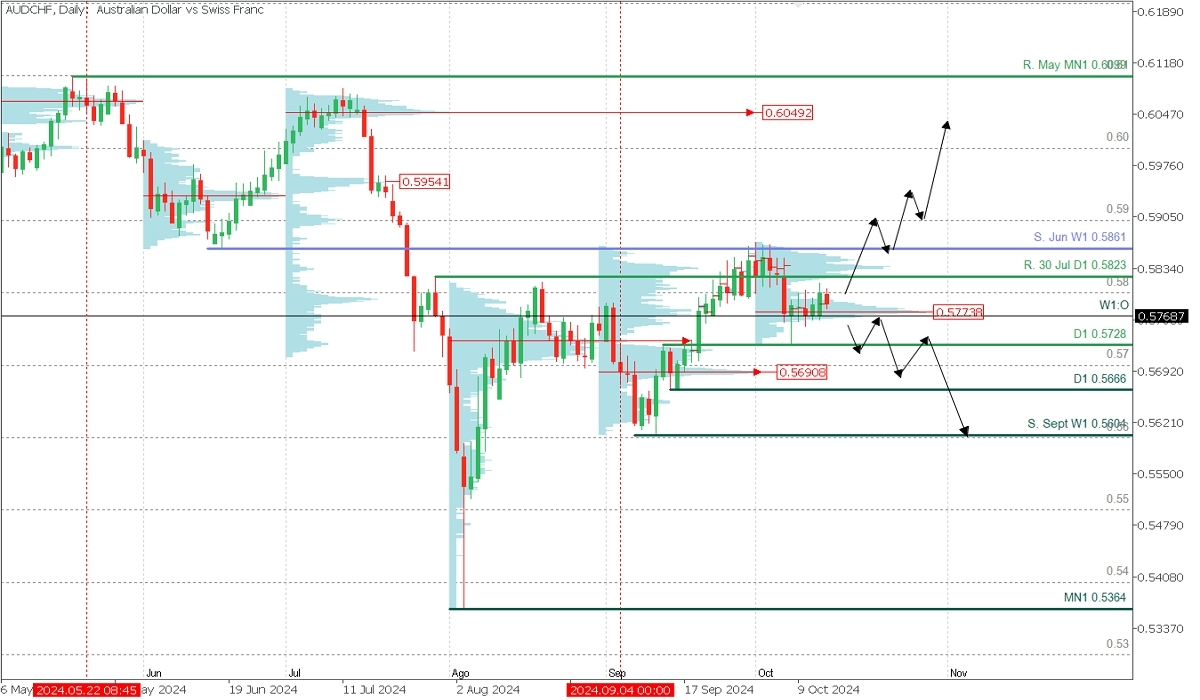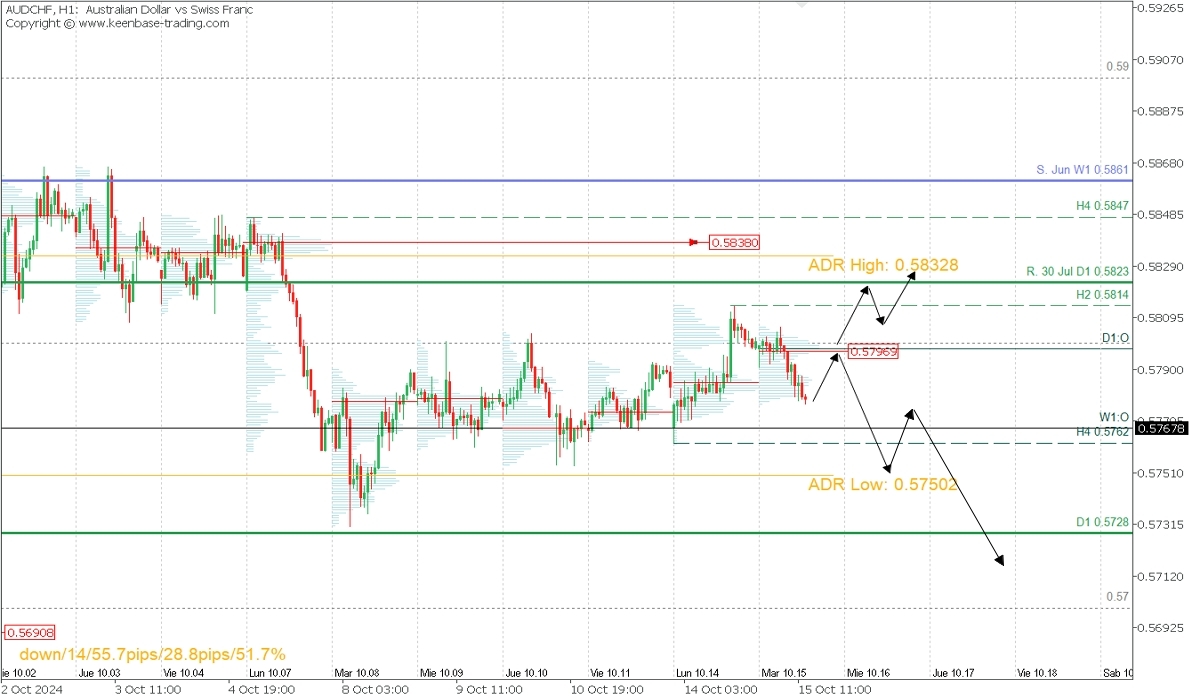Fundamental Analysis
The AUDCHF pair is under pressure in October 2024 due to economic and geopolitical factors. The escalation of the Middle Eastern conflict has strengthened the Swiss franc as a safe haven, while the Australian dollar has lost momentum. Despite some positive economic data from Australia, such as a slight increase in housing prices, the housing market growth is slowing. Meanwhile, the Reserve Bank of Australia (RBA) has kept its benchmark rate unchanged at 4.35% since its last hike in November 2023.
On the other hand, the Swiss economy remains stable, with controlled inflation and a rise in retail sales in August. This strengthens the CHF's position amid global uncertainty. Additionally, the moderation in commodity prices is affecting the AUD, which relies heavily on exports of these goods.
Technical Analysis
AUDCHF, Daily

-
Supply Zones (Sell): 0.5835, 0.59, 0.5954, 0.6049
Demand Zones (Buy): 0.5773, 0.5690, 0.5646
The pair is challenging the broader bearish trend after completing a breakout above the latest validated daily resistance at 0.5823 and correcting to the 50% Fibonacci level at 0.6504, close to the broken resistance at 0.5728. So far in October, a volume cluster has formed around 0.5773, signalling a key demand zone as long as the price remains above it.
For a bullish reversal to be confirmed, the price needs to break above October's high of 0.5869. Then, the target should be July’s key supply zones at 0.59 and 0.5954 and the uncovered POC from July at 0.6049.
However, the bias remains bearish in the short term, as daily candles indicate a bearish dominance. The price must break through the supply zone between 0.5823 and 0.5861 to change the local bearish bias.
On the downside, if the price fails to break above October’s high and falls below 0.5773, a continuation toward 0.57 as the next liquidity zone can be expected. The last validated support for the September bullish move is at 0.5666, meaning buyers are expected to enter while this level holds.
AUDCHF, H1

The intraday technical structure remains bearish, with the price correcting with moderate bullish strength after the drop on October 7. Currently trading just below yesterday’s demand zone, a potential new rally could occur if the price recovers above 0.5785, targeting the POC from the early sessions around 0.5796, which is an intraday supply zone that may trigger bear activity.
However, a break above this area could extend buying toward yesterday’s resistance at 0.5814, daily resistance at 0.5823, and the average bullish range at 0.5832.
On the flip side, if the price fails to break above the early session POC around 0.5796 and drops toward the last validated intraday support at 0.5762, the bearish trend will extend, targeting the average bearish range of 0.5750, daily level at 0.5728, or potentially 0.57 in the coming days.
Technical Summary
Buy after a retracement above 0.5785 with a TP at 0.58. If it breaks, consider extending the bullish move to 0.5814, 0.5823, or 0.5832. Use an SL of 1% of your capital with a low lot size to allow for movement.
Sell below the support at 0.5762 with TP at 0.5750, 0.5728, or 0.57 in extension. Use an SL of 1% of your capital.
Always wait for the formation and confirmation of an exhaustion/reversal pattern on M5 as taught here [https://t.me/spanishfbs/2258] before entering any trade in the key zones mentioned.
The uncovered Point of Control (POC) refers to the level where the highest concentration of volume occurred. If, previously, the price moved downward from this level, it is considered a supply zone and forms a resistance area. Conversely, if the price moved upward from the POC, it is viewed as a demand zone, often situated near lows, and forms support areas.
@2x.png?quality=90)



